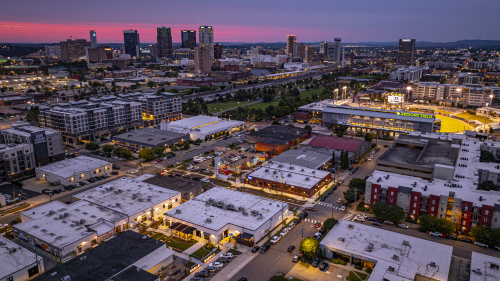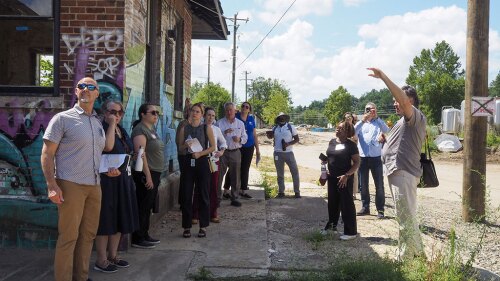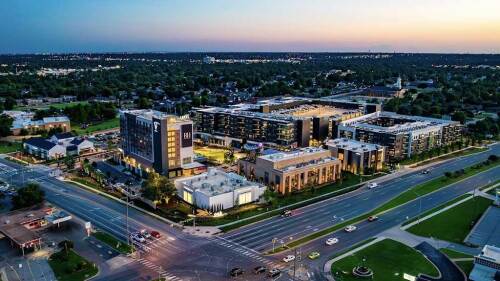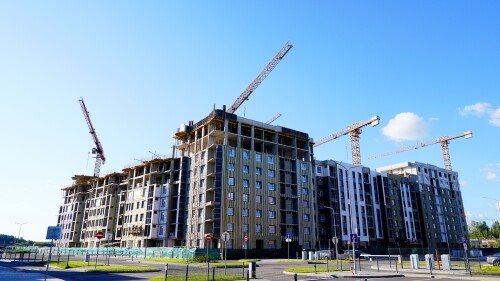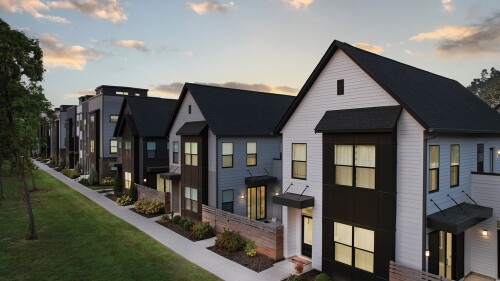Property Types
Hotels and Resorts
The hotel industry in the United States faces complex challenges in 2025, according to Jan Freitag, national director of hospitality analytics for the CoStar Group. During the “State of the U.S. Hotel Industry” presentation at the ULI 2025 Spring Meeting in Denver, Colorado, Freitag highlighted the challenges facing the hotel business amid macroeconomic uncertainty.
Once a sprawling expanse of uncharted land, Las Vegas, Nevada, has evolved into the entertainment capital of the world, a gaming super-hub, and a premier destination for sports. This remarkable transformation didn’t happen overnight; it stemmed from decades of strategic planning, investment, and visionary zoning recommendations.
Las Vegas is unlike any other place in America. Each year it draws more than 40 million visitors to the dazzling casinos and hotels that “turn night into daytime”—and transform the city into a glittering jewel in the desert. With 164,000 hotel rooms, Las Vegas is the largest hospitality market in the U.S.—outpacing Orlando, Florida, the next biggest market, by approximately 15 percent, according to JLL.
Industrial
In 2025, the country’s industrial market is experiencing a rebalancing in the wake of surging demand and record new supply that marked the early pandemic years. New opportunities in fast-growing markets are emerging, and demand drivers are shifting. New space demand will grow the most, especially for small-bay industrial assets, according to a Q3 2025 report from the business advisory and accounting firm Plante Moran.
Standing in the shadow of Regions Field and within earshot of Railroad Park, Birmingham’s Urban Supply hints at what the next chapter of downtown life could look like. Once-quiet brick warehouses are being steadily reimagined into patios, storefronts, and gathering spaces along a new pedestrian alley. Early tenants have begun to open their doors, and programming is slowly bringing people into the district. While the project is still in its early stages, the framework is in place for a vibrant hub that will grow block by block in the years ahead.
What trends are shaping the future of the industrial sector? Four experts from ULI’s Industrial and Office Park Development Council talk about the industrial submarkets and property types that offer the greatest opportunities, challenges developers face in bringing new projects to market, ways artificial intelligence and emerging technologies are reshaping the sector, tenant priorities, and other key trends.
Mixed-Use
Few properties in South Florida, or ones well beyond the area, embody vision and resilience quite like Pier Sixty-Six. With its unmistakable spire-crowned tower, set along Fort Lauderdale’s storied Intracoastal Waterway, the landmark has defined the city’s skyline for more than half a century. As a multi-billion-dollar redevelopment of this 32 acre (13 ha) waterfront is now complete, Pier Sixty-Six stands as a model for how iconic real estate assets can be reborn, honoring their history while shaping the next century of urban waterfront development.
New resilience framework touches on infrastructure, economy, equity, housing, and cultural vitality.
The OAK project began in 2009, when a development firm set their sights on the corner of Northwest Expressway and North Pennsylvania Avenue, the state’s most important and busiest retail intersection. As the region’s only parcel capable of supporting a vertically integrated project of this scale and density, that land represented an opportunity to create something truly special.
Multifamily
A new report by the construction scheduling platform Planera shows which U.S. states are adding the most new housing in 2025.
“The primary advantage every modular project has, if you do it right, is time savings,” said Mark Donahue—principal, design, for Lowney Architecture—during the “Offsite Evolved: How Today’s Prefab, Modular, and 3D-Printing Solutions Deliver Proven Speed, Savings, and Scale” panel at the ULI Fall Meeting in San Francisco. “You can, on a, say, 24-month construction project, save six to eight weeks.”
As congregations across North America grapple with shrinking membership and aging facilities, a new opportunity is emerging: transforming faith-owned land into affordable housing and community-serving spaces. At the 2025 ULI Fall Meeting in San Francisco, panelists in the session “Spiritual Brownfields: Declining Congregations and Opportunities for Housing on Faith-Owned Land” explored how churches and developers are partnering to bring mission-driven housing to underused sacred sites.
Office
U.S. water and sewer rates have surged more than 50 percent in the last decade, with no signs of slowing. In many regions, water supply itself is constrained. Utilities are imposing restrictions, droughts are reshaping long-term availability, and developers are being told there simply isn’t enough water to serve new projects. And even when water is available, municipal wastewater systems often aren’t adequate to handle the extra load.
In the heart of London’s Covent Garden neighborhood, a complex of five Victorian-era structures—previously home to a seed merchant company, a brass and iron foundry, and a Nonconformist chapel, among other uses—have been restored and adapted into a single, cohesive office building with ground-floor retail and dining space. The three-year restoration preserved the property’s industrial heritage, yet it provides enough flexibility to meet the needs of today’s workforce.
A growing body of research indicates that physical space profoundly affects our brain health. The capacity of our buildings and public spaces to be regenerative in that regard remains largely untapped, however. The key resources for developing brain capital are brain skills—cognitive processes such as memory, attention, and critical thinking; and brain health—the overall functioning of an individual’s brain throughout that person’s life.
Residental
U.S. President Donald J. Trump signed the nearly 900-page One Big Beautiful Bill Act into law on July 4. The budget reconciliation legislation extends numerous provisions included in the 2017 Tax Cuts and Jobs Act that directly affect commercial real estate, including reinstatement of bonus depreciation and extension of the Qualified Opportunity Zone Program. It also incorporates provisions aimed at incentivizing affordable housing, including a significant expansion of the Low-Income Housing Tax Credit (LIHTC) program. At the same time, the new law makes major cuts to wind and solar incentives.
Five experts from ULI’s Residential Neighborhood Development Council discuss the challenges and opportunities ahead for homebuilders; what buyers and renters want from their neighborhoods, and how they value sustainability and resilience; what state and local housing policies are effectively encouraging housing construction; and other trends.
Amblebrook, an innovative retirement community in the historic setting of Gettysburg, Pennsylvania, was specifically designed to remedy this social disease. It shatters the mold of the conventional 55-plus community.
Retail
The National Retail Federation predicts a record-breaking 2025 holiday season, with U.S. sales for November and December projected to grow between 3.7 percent and 4.2 percent—pushing total holiday sales past $1 trillion for the first time. Yet there also are signs that consumers are nervous; that mood, plus accounting for inflation, could leave holiday spending relatively flat.
District Galleria, the name of a redevelopment plan in White Plains, New York—the county seat of Westchester—will demolish a four-and-a-half-decade-old enclosed mall and transform it into a community-oriented, mixed-use residential and retail space. The development team behind the multi-billion-dollar project is Pacific Retail Capital Partners (PRCP), which formed a joint venture with mall owner Aareal Bank, local developer Louis Cappelli of the Cappelli Organization, and New York’s SL Green Realty in 2022.
For decades, civic leaders have tried to revitalize Market Street, San Francisco’s central thoroughfare, only to see their efforts founder. “I sometimes call it the great white whale of San Francisco,” says Eric Tao, managing partner at L37 Development in San Francisco and co-chair of ULI San Francisco. “Every new mayor, every new planning director, every new economic development director has chased that white whale.” This year, however, an international competition of ideas hosted and run by ULI San Francisco, with support from the ULI Foundation, generated fresh momentum for reimagining the boulevard. The competition drew 173 submissions from nine countries and sparked new conversations about the future of downtown San Francisco.





